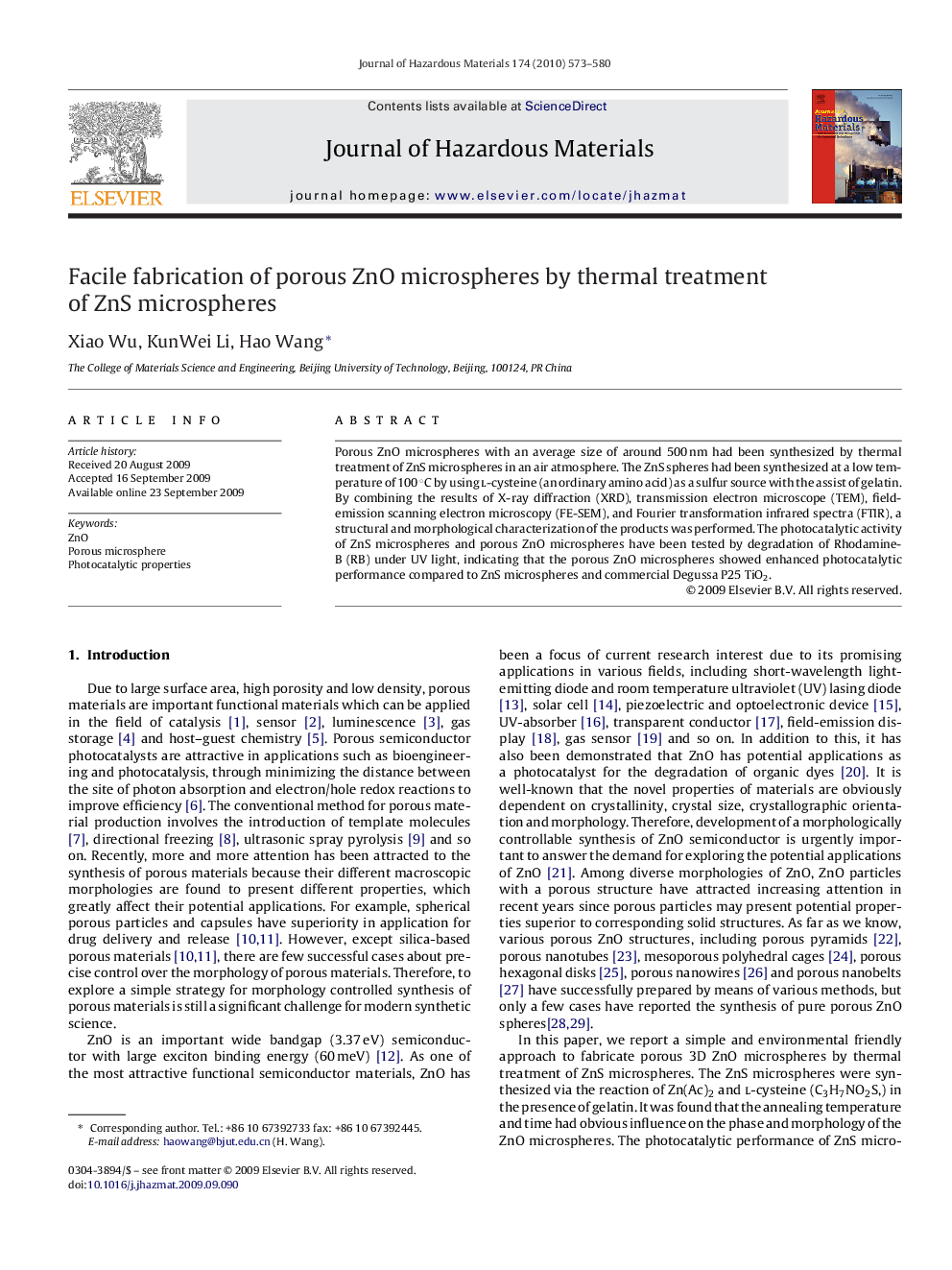| Article ID | Journal | Published Year | Pages | File Type |
|---|---|---|---|---|
| 580707 | Journal of Hazardous Materials | 2010 | 8 Pages |
Abstract
Porous ZnO microspheres with an average size of around 500 nm had been synthesized by thermal treatment of ZnS microspheres in an air atmosphere. The ZnS spheres had been synthesized at a low temperature of 100 °C by using l-cysteine (an ordinary amino acid) as a sulfur source with the assist of gelatin. By combining the results of X-ray diffraction (XRD), transmission electron microscope (TEM), field-emission scanning electron microscopy (FE-SEM), and Fourier transformation infrared spectra (FTIR), a structural and morphological characterization of the products was performed. The photocatalytic activity of ZnS microspheres and porous ZnO microspheres have been tested by degradation of Rhodamine-B (RB) under UV light, indicating that the porous ZnO microspheres showed enhanced photocatalytic performance compared to ZnS microspheres and commercial Degussa P25 TiO2.
Related Topics
Physical Sciences and Engineering
Chemical Engineering
Chemical Health and Safety
Authors
Xiao Wu, KunWei Li, Hao Wang,
